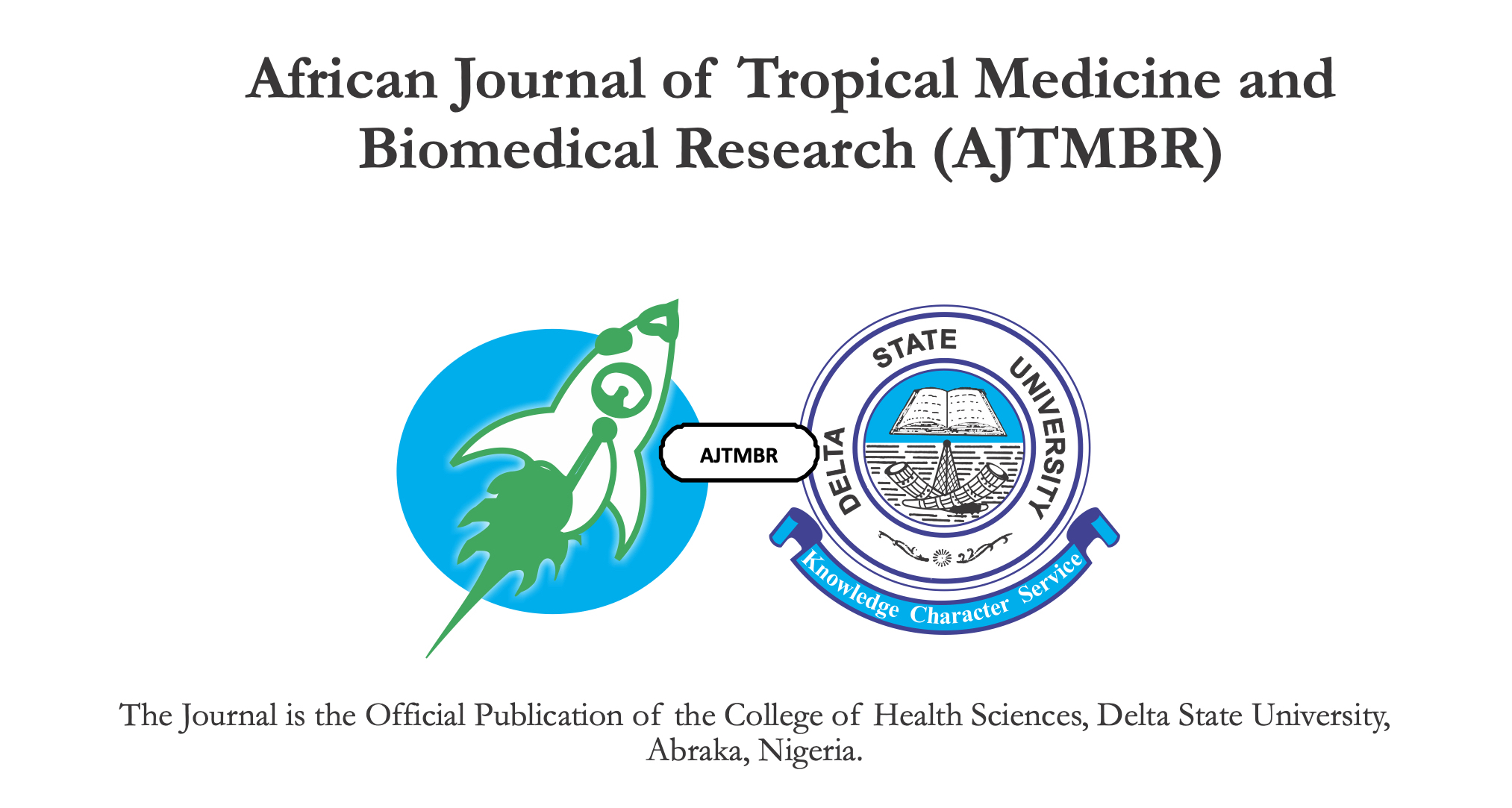Laryngeal Trauma in Port Harcourt:
A Review of 68 Cases
Keywords:
Laryngeal trauma, Upper airway obstructionAbstract
Background: Head and neck injuries with associated laryngeal trauma appear to be on the increase nowadays with most patients presenting with features of acute upper airway obstruction. This study determined the sources of laryngeal trauma, clinical profile, complications and management outcome.
Patients and methods: This was a retrospective study carried out in the University of PortHarcourt Teaching Hospital (UPTH). Case notes of patients that presented through the accident and emergency department with neck trauma involving the larynx and surrounding tissues between September 2004 and August 2009 were retrieved and used for this study. Out of 200 patients only 68 had neck trauma with laryngeal involvement. Patients who had laryngeal trauma
from corrosives were excluded from this study. Demographic data, cause of injury, clinical features, complications and outcome of treatment were recorded and analyzed.
Results: Out of 200 patients with various neck traumas, 68 (34%) were noted to have laryngeal involvement. The age range of the patients was 15-65years. The younger age groups were mostly affected, especially males. Gunshot wounds and Road Traffic Accident (RTA) dominated (n=58, 85.30%) the picture and presenting with upper airway obstruction. Majority (n=60, 88.24%) of patients were successfully managed without complication. No mortality was recorded in our series but a few (n=8, 11.76%) had chronic laryngotracheal stenosis.
Conclusion: Trauma to the larynx arising from gunshot wounds to the neck due to violence was found to be a major problem among the youth in Port Harcourt. Government intervention with gainful employment and provision of infrastructure are strongly advised to reduce the incidence of
laryngeal trauma.
References
Peralta R, Hurford WE. Airway trauma. Int Anaesthesiol Clin. 2000, 38(3) 111-27
Sari M, Baylancicek S, Inanli S. Atypical penetrating laryngeal trauma: a bullet in the larynx. Eur J Emerg Med. 2007;
(4):230-2.
Schaefer SD. The acute management of External Laryngeal trauma, a 27 year experience, Archives of Otolaryngology Head and Neck Surgery., Vol 118, June 1992, 598-604
Ezeanolue BC. Management of the upper airway in severe cut throat injuries. Afr J Med Sci. 2001; 30(3): 233-235.
Schaefer SD. The treatment of acute external laryngeal injuries "State of the Art". Arch Otolaryngol Head Neck Surg.1991:117; 35-39
Hanft K, Posternack C, Astor F, Attarian D. Diagnosis and management of laryngeal trauma in sports. South Med J. 1996;89(6):631-3.
Wana SY. Management Dilemas in laryngeal trauma. J Laryngol Otol. 2004, vol. 118: 325-8
Corneille MG, Stewart RM, Cohn SM. Uppe r a irway injury and its management. Semin Thorac Cardiovasc Surg. 2008; 20(1):8-12.
Gussack GS, Jurkovich GJ. Treatment dilemmas in laryngotracheal trauma. J. Trauma 1988; 28: 1439 - 43
Schaefer SD. Use of CT scanning in the management of the acutely injured larynx. Oto Clinics of North America.
:24(1); 31-36
Shabbir A, Sohail A. Laryngotracheal trauma: Its mamagement and sequelae. J. Pak med Assoc. 2008; 58(5): 241-3
Hwang SY, Yeak SC. Management dilemmas in laryngeal trauma. J Laryngol Otol. 2004; 118(5):325-8.
Grewal H, Rao PM, Mukerji S, Ivatury RR. Management of penetrating laryngotracheal injuries. Respir Care Clin N Am. 2001 Mar;7(1):13-23.
Demetriades D, Theodorou D, Cornwell E, Berne TV, Asensio J, Belzberg H, Velmahos G, Weaver F, Yellin A. Evaluation of penetrating injuries of the neck: prospective study of 223 patients.World J Surg. 1997; 21(1):41-7; discussion 47-8.
Myers EM, Iko BO. The management of acute laryngeal trauma. J Trauma. 1987; 27(4):448-52.
Schaefer SD. The acute surgical treatment of the fractured larynx. O p e r a t i v e T e c h n i q u e s i n Otolaryngology-Head and Neck Surgery. 1990; 1(1):64-70
da Lilly-Tariah OB. Anterior neck injuries at the University of Port Harcourt Teaching Hospital. TNHJ 2006; 6(3&4):391-394.
Onotai LO, Ibekwe U. The pattern of cut throat injuries in the University of Port Harcourt Teaching Hospital. Niger j med.2010; 19(3): 264-266.
Okoye BCC, Oteri AJ. Cut throat injuries in Port Harcourt.Sahel medical j. 2001; 4(4):207-209
Alabi BS, Ologe FE, Dunmade AD, Segun-busari S, Olatoke F. Acute Laryngeal Obstruction in a Nigerian Hospital: Clinical Presentation and Management. Niger Postgrad Med J, 2006; 13(3): 240-243.

Downloads
Published
Issue
Section
License

This work is licensed under a Creative Commons Attribution-NoDerivatives 4.0 International License.
Key Terms:
- Attribution: You must give appropriate credit to the original creator.
- NonCommercial: You may not use the material for commercial purposes.
- ShareAlike: If you remix, transform, or build upon the material, you must distribute your contributions under the same license as the original.
- No additional restrictions: You may not apply legal terms or technological measures that legally restrict others from doing anything the license permits.
For full details, please review the Complete License Terms.



